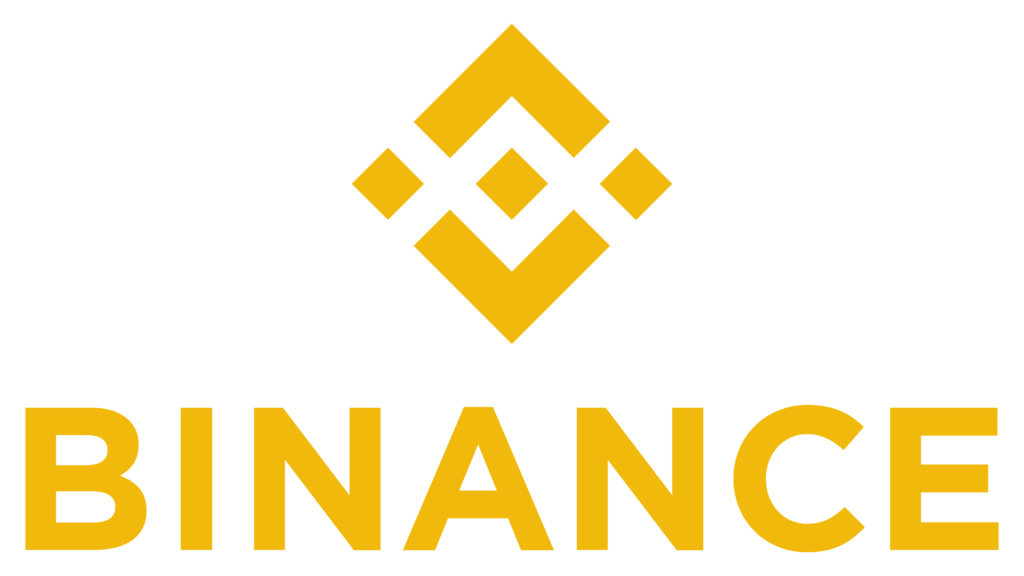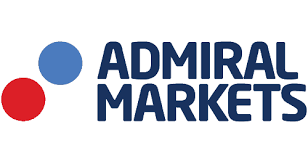
Investing 100 euros each month is a great way to build wealth over time. Here are ten different investment methods you can consider, along with a brief explanation of each:
- Exchange-Traded Funds (ETFs): ETFs are investment funds that are traded on stock exchanges. They offer diversification by investing in a basket of different assets, such as stocks, bonds, or commodities. By investing in ETFs, you can gain exposure to various markets and sectors.
- Index Funds: Index funds are a type of mutual fund that aims to replicate the performance of a specific market index, such as the S&P 500. They provide broad market exposure and typically have lower fees compared to actively managed funds.
- Dividend Stocks: Dividend stocks are shares of companies that distribute a portion of their profits to shareholders in the form of dividends. Investing in dividend-paying stocks can provide a regular income stream and potential capital appreciation.
- Bonds: Bonds are fixed-income securities issued by governments, municipalities, or corporations. When you invest in bonds, you lend money to the issuer in exchange for periodic interest payments and the return of the principal amount at maturity.
- Real Estate Investment Trusts (REITs): REITs are companies that own, operate, or finance income-generating real estate properties. By investing in REITs, you can gain exposure to the real estate market without the need for direct property ownership.
- Peer-to-Peer Lending: Peer-to-peer lending platforms connect borrowers with lenders, bypassing traditional financial institutions. By lending your money through these platforms, you earn interest on the loans you provide, potentially generating a higher return compared to traditional savings accounts.
- Mutual Funds: Mutual funds pool money from multiple investors to invest in a diversified portfolio of stocks, bonds, or other securities. They are managed by professional fund managers who make investment decisions on behalf of the investors.
- Robo-Advisors: Robo-advisors are online investment platforms that use algorithms to provide automated investment advice. They typically create and manage a diversified portfolio based on your risk tolerance and financial goals.
- Individual Stocks: Investing in individual stocks involves purchasing shares of specific companies. It requires research and analysis to select stocks with growth potential or undervalued stocks that may provide significant returns over time.
- Cryptocurrencies: Cryptocurrencies, such as Bitcoin or Ethereum, are digital assets that use cryptography for security. They can be purchased and held as an investment, with the potential for substantial returns but also higher volatility and risk compared to traditional investments.
Please note that while these investment options can potentially generate returns, they also come with risks. It’s important to do thorough research, consider your risk tolerance, and, if necessary, consult with a financial advisor before making any investment decisions.
What are the top exchange traded funds to invest in
Here are a few widely recognized ETFs:
- Vanguard Total Stock Market ETF (VTI): This ETF aims to track the performance of the CRSP US Total Market Index, providing broad exposure to the U.S. equity market.
- iShares Core S&P 500 ETF (IVV): It seeks to mirror the performance of the S&P 500 index, representing the 500 largest publicly traded companies in the U.S.
- Invesco QQQ Trust (QQQ): This ETF tracks the performance of the Nasdaq-100 Index, which consists of 100 of the largest non-financial companies listed on the Nasdaq stock exchange.
- iShares MSCI Emerging Markets ETF (EEM): It offers exposure to a broad range of emerging market stocks, providing investors with access to developing economies’ growth potential.
- iShares Core U.S. Aggregate Bond ETF (AGG): This ETF aims to replicate the performance of the Bloomberg Barclays U.S. Aggregate Bond Index, which includes a diverse range of U.S. investment-grade bonds.
- iShares Gold Trust (IAU): It reflects the performance of the price of gold bullion, allowing investors to gain exposure to the precious metal.
- Vanguard FTSE Developed Markets ETF (VEA): This ETF tracks the performance of the FTSE Developed All Cap ex US Index, providing exposure to developed international equity markets outside the United States.
- SPDR S&P Dividend ETF (SDY): It focuses on high-yielding dividend stocks that have a consistent track record of increasing dividends over time.
- iShares Global Clean Energy ETF (ICLN): This ETF invests in global companies involved in the renewable energy and clean technology sectors.
- VanEck Vectors Semiconductor ETF (SMH): It offers exposure to companies involved in the production of semiconductors, a vital component of various technological devices.
To invest in these ETFs, you can typically do so through online brokerage platforms. Popular platforms include TD Ameritrade, Charles Schwab, Fidelity, E*TRADE, Interactive Brokers, and many others. It’s important to compare the features, fees, and services provided by different brokers to find one that aligns with your investment needs.
Remember to conduct thorough research, review the ETF’s prospectus, and consider factors like expense ratios, historical performance, and the fund’s objective before investing in any ETF.
What are the top index funds to invest in
There are several index funds available for European investors that provide exposure to different markets and asset classes. Here are some popular index funds specifically suitable for European investors:
- iShares Core MSCI World UCITS ETF (IWDA): This fund tracks the MSCI World Index, which represents large and mid-cap companies across developed countries worldwide. It is available for investment on various European exchanges.
- Lyxor Core STOXX Europe 600 (DR) UCITS ETF (MSEU): This ETF aims to replicate the performance of the STOXX Europe 600 Index, which includes companies from 17 European countries. It is listed on multiple European exchanges.
- Xtrackers Euro Stoxx 50 UCITS ETF (XD5E): This fund tracks the performance of the Euro Stoxx 50 Index, which consists of 50 blue-chip stocks from Eurozone countries. It can be traded on major European stock exchanges.
- Amundi Index MSCI Emerging Markets UCITS ETF (CEEMEA): This ETF seeks to replicate the MSCI Emerging Markets Index, providing exposure to a broad range of equities from emerging market countries. It is available for investment on various European exchanges.
- Vanguard FTSE Developed Europe UCITS ETF (VEUR): This fund aims to track the performance of the FTSE Developed Europe All Cap Index, which includes large, mid, and small-cap companies from developed European countries. It can be traded on European exchanges.
- iShares Euro Corporate Bond Large Cap UCITS ETF (IEAC): This ETF focuses on Euro-denominated investment-grade corporate bonds, providing exposure to the European corporate bond market. It is listed on multiple European exchanges.
- Xtrackers II Global Government Bond UCITS ETF (XGSG): This fund tracks the performance of the Bloomberg Barclays Global Aggregate Treasury EUR Hedged Index, offering exposure to government bonds from around the world. It can be traded on various European exchanges.
When it comes to investing in these index funds, you can choose from several European brokerage platforms or online investment providers. Some popular options include:
- DEGIRO
- Interactive Brokers
- XTB
- eToro
- Saxo Bank
- Revolut (for mobile investing)
These platforms offer access to a wide range of investment products, including index funds, and allow you to invest in various European and international markets. It’s important to compare the fees, services, and available markets on each platform to find one that suits your investment goals and preferences.
Remember to conduct your own research, review the fund’s prospectus, and consider factors such as expense ratios, liquidity, and the fund provider’s reputation before investing in any index fund.
What are some of the best dividend stocks to invest in
Investing in dividend stocks can be a strategy to generate regular income and potentially benefit from long-term capital appreciation. While it’s important to conduct thorough research and consider individual financial goals and risk tolerance, here are some well-known European dividend stocks to consider:
- Royal Dutch Shell (RDSA/RDSB): A major integrated energy company with a long history of dividend payments and operations worldwide.
- Unilever (ULVR/UNA): A multinational consumer goods company offering a wide range of household products, with a consistent dividend track record.
- Novartis (NOVN): A Swiss multinational pharmaceutical company known for its research, development, and production of innovative healthcare solutions.
- Nestle (NESN): One of the world’s largest food and beverage companies, offering a diverse range of products and a reliable dividend history.
- Enel (ENEL): An Italian multinational energy company focusing on renewable energy, traditional power generation, and electricity distribution.
- Banco Santander (SAN): A Spanish banking giant with a significant presence in Europe and Latin America, known for its dividend payouts.
- TotalEnergies (TOT): A French multinational energy company engaged in oil and gas exploration, production, refining, and marketing.
- Zurich Insurance Group (ZURN): A Swiss-based insurance company providing a broad range of insurance products and financial services globally.
- British American Tobacco (BATS): A multinational tobacco company with a diverse portfolio of cigarette and tobacco products.
- Telefonica (TEF): A Spanish multinational telecommunications company operating in Europe and Latin America, known for its dividend payments.
It’s important to note that dividend stocks can be subject to market risks and changes in the company’s financial health. Therefore, it’s advisable to evaluate factors like dividend yield, payout ratio, dividend growth history, and the overall financial strength of the company before making investment decisions.
Additionally, consider consulting with a financial advisor or conducting thorough research to align your investment choices with your specific financial goals and risk tolerance.
What are some bonds that europeans can invest in
Europeans have access to a wide range of bonds that they can invest in, including government bonds, corporate bonds, and international bonds. Here are some common types of bonds and where Europeans can buy them:
- Government Bonds: These bonds are issued by national governments to finance their spending needs. European investors can buy government bonds issued by their own country or by other European countries. Government bonds are typically available through primary market auctions or secondary market trading on stock exchanges. Additionally, investors can access government bonds through banks, brokers, and online investment platforms.
- Corporate Bonds: These bonds are issued by corporations to raise capital for various purposes. European investors can buy corporate bonds issued by European companies. Corporate bonds are available on primary markets when they are initially issued and can also be traded on secondary markets. They can be purchased through banks, brokers, and online investment platforms that offer bond trading services.
- European Central Bank (ECB) Bonds: The ECB issues bonds as part of its monetary policy operations. These bonds are typically available for purchase by financial institutions through specialized channels, such as primary dealers. Retail investors can indirectly access ECB bonds through bond mutual funds or ETFs that invest in them.
- Eurobonds: Eurobonds are bonds issued in a currency other than the currency of the country where they are issued. These bonds can be denominated in euros and are available for purchase by European investors. Eurobonds are typically traded on international bond markets and can be bought through banks, brokers, and online investment platforms that provide access to global bond markets.
- European Investment Bank (EIB) Bonds: The EIB issues bonds to finance projects that support the economic development of EU member states. European investors can buy EIB bonds through primary market auctions or secondary market trading. EIB bonds are available through banks, brokers, and online investment platforms that offer access to bond markets.
When it comes to buying bonds, European investors can consider various options such as:
- Banks: Many banks offer bond trading services to their clients, allowing them to buy bonds directly from the bank’s bond desk.
- Brokers: Online brokerage platforms provide access to bond trading, allowing investors to buy and sell bonds on the secondary market.
- Online Investment Platforms: There are online investment platforms that provide access to bond markets, allowing investors to buy bonds from a wide range of issuers.
- Primary Market Auctions: Some government bonds are issued through primary market auctions, where investors can participate directly to buy newly issued bonds.
It’s important to consider factors like credit rating, bond yield, maturity, and the financial health of the issuer before investing in bonds. Additionally, it’s recommended to consult with a financial advisor or do thorough research to make informed investment decisions based on individual circumstances and risk tolerance.
What are the tops REITs in Europe and where to buy them
Investing in Real Estate Investment Trusts (REITs) can provide exposure to the real estate sector and potentially generate income through dividends. Here are some of the top REITs in Europe, along with the possible locations to buy them:
- Unibail-Rodamco-Westfield (URW): A leading European commercial property company specializing in shopping centers and office buildings. It is listed on major European stock exchanges, such as Euronext Paris, Euronext Amsterdam, and Xetra.
- Vonovia SE: A German residential real estate company that owns and manages a large portfolio of residential properties across Germany. Its shares are listed on the Frankfurt Stock Exchange.
- SEGRO plc: A UK-based REIT focused on industrial and logistics properties. It is listed on the London Stock Exchange.
- Land Securities Group plc: A UK-based REIT specializing in commercial properties, including offices and retail spaces. It is listed on the London Stock Exchange.
- Deutsche Wohnen SE: A German residential real estate company with a significant portfolio of rental apartments in major German cities. Its shares are listed on the Frankfurt Stock Exchange.
- British Land Company plc: A UK-based REIT that owns and manages a diverse portfolio of commercial properties, including offices, retail, and mixed-use developments. It is listed on the London Stock Exchange.
- Gecina SA: A French REIT focused on office properties and residential assets. It is listed on Euronext Paris.
- Klépierre: A European REIT specializing in shopping centers across various European countries. It is listed on Euronext Paris.
To buy these REITs, you can consider the following options:
- Online Brokerage Platforms: Many online brokerage platforms in Europe provide access to major stock exchanges, allowing you to buy and sell shares of REITs. Examples include platforms like DEGIRO, Interactive Brokers, and XTB.
- Traditional Brokerage Firms: Traditional brokerage firms with physical branches also offer services for buying and selling REIT shares. Some well-known examples include banks like Barclays, Deutsche Bank, and Société Générale.
- Direct Investment Plans: Some REITs offer direct investment plans or dividend reinvestment plans (DRIPs), which allow investors to buy shares directly from the company. You can check the official websites of the specific REITs to see if they offer such plans.
Before investing in REITs, it’s important to research and evaluate factors such as the REIT’s property portfolio, financial performance, dividend history, and management team. Additionally, consider consulting with a financial advisor or conducting thorough research to align your investment choices with your specific financial goals and risk tolerance.
What are the top peer-to-peer lending platforms to invest in
When it comes to peer-to-peer (P2P) lending platforms, there are several well-established options that provide opportunities for investors to lend money and earn interest. Here are some of the top P2P lending platforms to consider:
- LendingClub: LendingClub is one of the largest and most recognized P2P lending platforms in the United States. It offers personal loans, business loans, and patient financing loans. However, please note that as of my knowledge cutoff in September 2021, LendingClub does not accept international investors.
- Prosper: Prosper is another prominent P2P lending platform in the United States, specializing in personal loans. Similar to LendingClub, Prosper is limited to U.S. investors only.
- Funding Circle: Funding Circle is a global P2P lending platform that operates in several countries, including the United Kingdom, Germany, the Netherlands, and the United States. It focuses on providing small business loans.
- Mintos: Mintos is a European P2P lending marketplace that connects investors with loan originators across various countries and loan types. It offers a wide range of loans, including personal loans, mortgage loans, and business loans.
- Bondora: Bondora is an Estonian P2P lending platform that provides personal loans to borrowers primarily in Estonia, Finland, and Spain. It allows investors to build portfolios of loans from different countries.
- Zopa: Zopa is one of the oldest P2P lending platforms in the United Kingdom. It offers personal loans and has a solid track record in the industry.
- RateSetter: RateSetter is another well-established P2P lending platform in the United Kingdom. It facilitates personal loans, business loans, and property development loans.
- Twino: Twino is a Latvian P2P lending platform that focuses on consumer loans. It operates in several European countries and allows investors to diversify across different loan originators.
It’s important to note that investing in P2P lending carries risks, including the potential for borrower defaults and platform risks. Before investing, carefully review the platform’s terms and conditions, loan diversification options, and the historical performance of loans. Additionally, consider factors such as the platform’s reputation, transparency, and investor protection measures.
Remember to conduct thorough research and, if necessary, consult with a financial advisor to ensure P2P lending aligns with your investment goals and risk tolerance.
What are some of the top mutual funds for Europeans to invest in
here are some popular mutual fund options for European investors:
- BlackRock European Equity Index Fund: This fund aims to replicate the performance of the FTSE Developed Europe ex-UK Index, providing exposure to large and mid-cap European companies.
- Fidelity Global Technology Fund: This fund focuses on investing in technology-related companies worldwide, providing exposure to the global technology sector.
- Vanguard LifeStrategy Funds: Vanguard offers a range of LifeStrategy Funds with varying allocations to equity and fixed-income assets, allowing investors to choose their preferred level of risk and diversification.
- Pictet Global Megatrend Selection Fund: This fund seeks to invest in companies positioned to benefit from long-term global trends, such as technological innovation, changing demographics, and sustainability.
- M&G Global Dividend Fund: This fund aims to provide income and long-term capital growth by investing in a diversified portfolio of global dividend-paying stocks.
- Threadneedle European Select Fund: This fund focuses on European equities, aiming to invest in companies with sustainable growth potential and attractive valuations.
- JPMorgan Global Income Fund: This fund aims to provide a regular income by investing in a diversified portfolio of global equities and fixed-income securities.
- Fidelity Emerging Markets Fund: This fund invests in companies located in emerging market countries, offering exposure to the growth potential of these economies.
To invest in these mutual funds, Europeans can consider various options:
- Directly through Fund Providers: Many fund providers, such as BlackRock, Fidelity, Vanguard, Pictet, and M&G, offer their mutual funds directly to investors. Investors can access these funds through the fund provider’s website or by contacting their customer service.
- Online Investment Platforms: Several online investment platforms and brokers provide access to a wide range of mutual funds. Examples include platforms like DEGIRO, Interactive Brokers, eToro, and Hargreaves Lansdown.
- Banks and Financial Institutions: European banks and financial institutions often offer their own range of mutual funds to investors. Investors can approach their banks or financial advisors to explore available options.
Before investing in mutual funds, it’s crucial to carefully review the fund’s prospectus, performance history, fees, and the fund manager’s track record. It’s also advisable to consider factors such as your investment goals, risk tolerance, and time horizon.
Remember to consult with a financial advisor or conduct thorough research to make informed investment decisions based on your individual circumstances.
What are some of the best robo-advisors and how to get started
There are several reputable robo-advisors available for individuals looking for automated investment management services. Here are some of the best-known robo-advisors:
- Betterment: Betterment is a popular robo-advisor that offers automated investment portfolios based on your goals and risk tolerance. It provides diversified portfolios of low-cost ETFs and offers additional features like tax-loss harvesting and financial planning tools.
- Wealthfront: Wealthfront is another well-established robo-advisor that uses Modern Portfolio Theory to create and manage diversified portfolios. It offers features like tax-efficient investing, direct indexing, and a cash management account.
- Nutmeg: Nutmeg is a leading robo-advisor in the United Kingdom. It offers diversified investment portfolios with different risk levels and provides options for general investing, stocks and shares ISAs, and pensions.
- Charles Schwab Intelligent Portfolios: Charles Schwab’s robo-advisor platform offers a wide range of investment options and features. It provides automated portfolio management, tax-loss harvesting, and access to financial advisors.
- Vanguard Personal Advisor Services: Vanguard is known for its low-cost index funds and ETFs, and it also offers a hybrid robo-advisor service. Investors can access personalized advice from human advisors, along with automated portfolio management.
To get started with a robo-advisor, the process generally involves the following steps:
- Research and Compare: Explore the features, investment strategies, fees, and services offered by different robo-advisors. Consider factors like minimum investment requirements, account types, and customer reviews to find the best fit for your needs.
- Sign up and Open an Account: Once you’ve chosen a robo-advisor, visit their website and sign up for an account. You’ll typically need to provide personal information, such as your name, contact details, and financial goals.
- Complete a Risk Assessment: Most robo-advisors will ask you to complete a questionnaire or risk assessment to determine your risk tolerance and investment goals. This information helps the robo-advisor recommend an appropriate portfolio allocation.
- Fund Your Account: Once your account is set up, you’ll need to transfer funds to the robo-advisor platform. You can typically transfer funds from your bank account via electronic transfer or wire transfer.
- Portfolio Creation and Management: Based on your risk profile and investment goals, the robo-advisor will create and manage a diversified portfolio on your behalf. The platform will automatically allocate your funds across different asset classes and periodically rebalance the portfolio to maintain the target allocation.
- Monitor and Review: Regularly monitor your robo-advisor account to stay updated on portfolio performance and any recommended adjustments. Some robo-advisors also provide access to financial planning tools and educational resources.
It’s important to note that while robo-advisors can provide automated investment management, they may not be suitable for every individual or complex financial situations. If you have specific investment needs or require personalized advice, consider consulting with a financial advisor.
Before investing, carefully review the robo-advisor’s terms, fees, and investment approach to ensure they align with your goals and risk tolerance.
What are some of the best performing individual stocks since 2010 and best platforms to buy them
Here are a few examples of well-known companies that have experienced significant growth during this period:
- Amazon (AMZN): The e-commerce giant has seen remarkable growth since 2010, driven by its dominance in online retail, cloud services (Amazon Web Services), and expansion into various industries.
- Apple (AAPL): Apple has had a remarkable decade with the success of its iPhone, as well as its expansion into other product lines, such as wearables and services.
- Microsoft (MSFT): Microsoft’s transformation under CEO Satya Nadella has led to strong growth, driven by its cloud computing platform (Azure) and successful software and productivity services.
- Alphabet (GOOGL/GOOG): The parent company of Google has experienced substantial growth, primarily due to its dominance in the search engine industry and expansion into various digital sectors.
- Tesla (TSLA): Tesla’s innovation in electric vehicles and renewable energy has catapulted the company’s stock price, making it one of the most notable success stories of the past decade.
Please note that past performance is not indicative of future results, and investing in individual stocks carries inherent risks. Thorough research, understanding of the company’s fundamentals, and consideration of market conditions are essential before making investment decisions.
As for platforms to buy individual stocks, there are various options available depending on your location. Here are a few popular platforms:
- Interactive Brokers: Interactive Brokers is a widely-used platform that provides access to global stock exchanges and offers competitive pricing.
- TD Ameritrade: TD Ameritrade is a popular platform in the United States, offering a range of investment options, including individual stocks.
- ETRADE: ETRADE is another well-known U.S.-based platform that provides access to individual stocks and other investment products.
- DEGIRO: DEGIRO is a pan-European online brokerage platform known for its low-cost trading services and access to international stock exchanges.
- Hargreaves Lansdown: Hargreaves Lansdown is a prominent UK-based platform offering a wide range of investment products, including individual stocks.
- Robinhood: Robinhood gained popularity for its user-friendly interface and commission-free trading. However, please note that availability may vary by country.
It’s important to compare the features, fees, available markets, and investor protection measures offered by different platforms to find one that aligns with your investment goals and preferences. Conduct thorough research, review the platforms’ terms and conditions, and consider seeking advice from a financial professional before making investment decisions.
Here are the 10 best performing cryptocurrencies in 2023 so far, based on market cap:
- Bitcoin (BTC): Market cap of $506.7 billion. It’s the original cryptocurrency and its price has skyrocketed over the years, with a growth of 5,124% since May 20161. The sentiment score for Bitcoin in 2023 is 64, indicating generally positive sentiment2.
- Ethereum (ETH): Market cap of $209.5 billion. It is both a cryptocurrency and a blockchain platform favored by developers for its potential applications like smart contracts and NFTs. Its price has increased by 15,740% from April 2016 to the end of June 20231.
- Tether (USDT): Market cap of $83.5 billion. It’s a stablecoin backed by fiat currencies, which is favored by investors wary of the extreme volatility of other coins1.
- Binance Coin (BNB): Market cap of $37.7 billion. It’s a cryptocurrency used to trade and pay fees on Binance, one of the largest crypto exchanges in the world. Since its launch in 2017, its price has increased by 241,902%1.
- U.S. Dollar Coin (USDC): Market cap of $28.3 billion. Like Tether, it’s a stablecoin backed by U.S. dollars and aims for a 1:1 ratio with the USD1.
- XRP: Market cap of $27.6 billion. It’s used on the Ripple network to facilitate exchanges of different currency types, including fiat currencies and other major cryptocurrencies. Its price has risen by 8,744% since the beginning of 20171.
- Cardano (ADA): Market cap of $9.7 billion. Notable for its early embrace of proof-of-stake validation, it also enables smart contracts and decentralized applications. Its price has increased by 1,295% since 20171.
- Dogecoin (DOGE): Market cap of $8.6 billion. Started as a joke in 2013 but evolved into a prominent cryptocurrency with a price increase of 30,766% since 20171.
- TRON (TRX): Market cap of $6.5 billion. It’s a decentralized blockchain platform which has seen a price increase of 2,700% since its launch in October 20171.
- Solana (SOL): Market cap of $6.1 billion. Developed to help power decentralized finance uses, DApps, and smart contracts, its price has increased by 1,886% since its launch in 20201.







